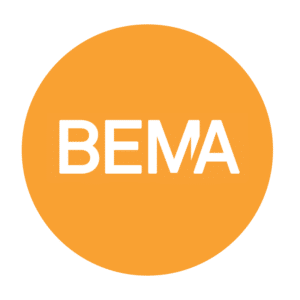04 Dec Recap Sanitary Design Roundtable – Are you ready? Building a roadmap to success

On Wednesday, Nov. 11, bakery and supplier members had an opportunity to discuss the challenges of risk assessment. Co-moderators for the event included Karl Thorson of General Mills, Jeremiah Tilghman of Flowers Corp., and Delia Justable of Forbo Siegling. The roundtable drew an international crowd of participants from the fields of engineering/maintenance, food safety/quality, R&D/technical support and safety.
In 2019, the co-moderators, who are also members of BEMA’s Baking Industry Forum (BIF) committee, were tasked with the development of the Overall Risk Assessment Tool. The ORA tool is designed to identify a project owner who will ideally coordinate the project task completion and report discrepancies. The tool identifies the food safety risk in a manufacturing process and assigns tasks to be completed by the responsible departments.
“By providing this resource, it is our intent to offer a tool that can help bakers and their suppliers access food safety risk within a manufacturing process,” Delia said. “In addition to the ORA tool, we also provide a supplementary tool aimed at providing guidance for early management of food safety and sanitary design.”
Key Features of the tool
During the roundtable, Karl, Jeremiah and Delia shared the versatile elements of the ORA tool which features multiple tasks for: Risk Management, Environmental, Fire Protection, Industrial Hygiene & Safety, Technical Safety (Combustion & Thermal Safety, Process & Pressure Vessel Safety, Welding Safety and Fire), Americans with Disabilities and Hazardous Material Transportation for U.S. companies, Security, Structural Issues, Building Code Compliance, Food Safety and HACCP, Sanitation & Equipment Design, Quality Management, Product Development Functionality and Regulatory.
Available for download on the BEMA website, the Excel format of the tool offers built-in flexibility for sorting, the addition of links to key documents and a comments section to facilitate critical conversations. The tool can be incorporated into an existing assessment option or serve as a jumping off point for individuals and companies working on a project for the first time.
“When you use a tool, you begin with the end in mind and think of the needs of the end user,” Jeremiah said. “It’s important to look at all of the elements of the business and ask if the design and equipment fulfill the needs of the department and ultimately the needs of all customers.”
Joint Initiative
Knowing the challenge of bringing so many people, departments and requirements together, the ORA tool contains a checklist that’s designed to drive active and inclusive discussion by formalizing responsibility of food safety risk-related tasks and providing accountability of action. Bakers and suppliers can also use the ORA to drive alignment across departments by identifying who is responsible and with whom to communicate the findings.
With a majority of those on the call already having a food safety/sanitary design assessment tool in place, the roundtable conversation centered around how to improve current processes. Suggestions included getting buy-in from and understanding the needs of the food customers, third parties and suppliers and asking what they need to mitigate risk including the use of materials with sensitivity to the use of cleaning methods.
Three-leg Stool (People, Cost, Quality)
Although it’s impossible to manage out all of the hazard, use of the ORA tool can ensure people, cost and quality receive equal balance in a project. 60% of the roundtable participants shared that they see a need for such an approach to align participants and make quality a joint responsibility.
The co-moderators emphasized the importance of designating an individual who will train new employees, contractors and hired services on plant GMP and sanitary design requirements. A survey poll of attendees found only 22% currently have this role in place. Then, it is up to the individuals within an organization to make consistent use of the tool – driving alignment of food safety and quality requirements across the industry.
“It’s easy to run into issues because you didn’t think of the right things to bring up or the right discussions or budgetary references were not shared from the onset,” Karl said. “There are opportunities in each company’s manufacturing process, and it’s team effort to deliver successful results.”
About the Baking Industry Forum
BEMA’s Baking Industry Forum (BIF) is composed of a small group of bakers and suppliers who come together to discuss topics and issues facing the commercial baking industry. The group is a strong resource for ideas and expertise based on research and years of experience. In the past, they have tackled issues such as preparations for FSMA, training, hiring veterans, safety, lean manufacturing, and sanitation and conveyor efficiencies. To learn more about BIF and the ORA tool, email info@bema.org





No Comments